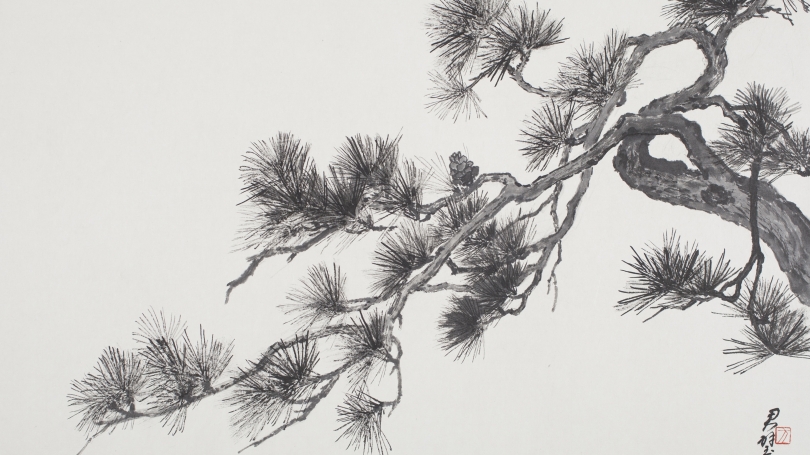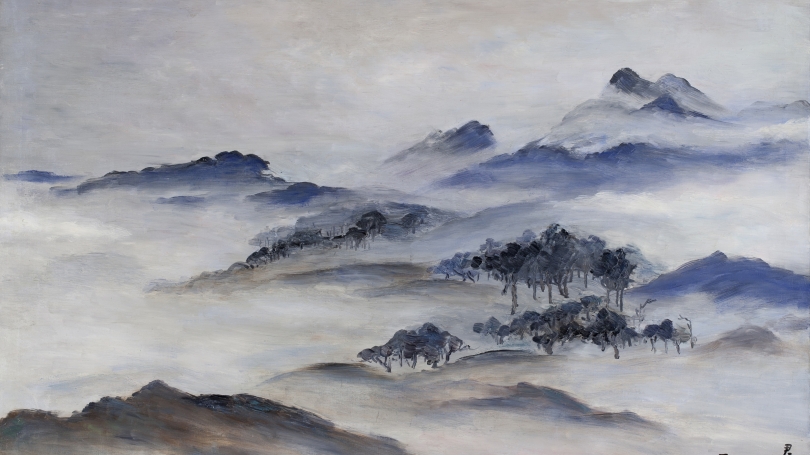September 7 through December 8, 2013
Hood Museum of Art Presents the Art of Fan Tchunpi
Fan Tchunpi (1898–1986) was one of the most important and prolific Chinese artists of the modern era, and the Hood Museum of Art at Dartmouth College is delighted to present the first solo exhibition of her work since her 1984 retrospective at the Musée Cernuschi (Asian Art Museum) in Paris. Between Tradition and Modernity: The Art of Fan Tchunpi examines Fan Tchunpi's search for an artistic language that would speak for the self and the nation in an age of crisis, war, and revolution.
The oil paintings, works on paper, and ceramics on display in this exhibition demonstrate her efforts to create a dynamic synthesis of Chinese and Western artistic traditions and techniques, while also reflecting the turbulent age in which she lived. The exhibition opens September 7 and closes December 8, 2013, and it will be accompanied by an eight-page full-color publication as well as programming throughout the fall.
"The works of art on display in Between Tradition and Modernity: The Art of Fan Tchunpi showcase the artist's consummate ability to successfully bridge Chinese and Western painting traditions," said Michael Taylor, Director of the Hood Museum of Art. "We are delighted to present the work of this European-trained Chinese modern artist in this exhibition, which I believe will be studied and enjoyed by a large number of Dartmouth students and faculty, as well as the Upper Valley community and visitors from out of town."
Fan Tchunpi was one of a number of twentieth-century Chinese artists who sought to revitalize the tradition of Chinese brush-and-ink painting (guohua) as a self-conscious expression of national identity. In 1932, while living and working in Shanghai, Fan Tchunpi began to experiment with traditional methods of Chinese painting, which she learned from Gao Jianfu (1879–1951) and his brother Gao Qifeng (1889–1935), the founders of the Lingnan School. As the school's name suggests, its artistic center was situated "south of the mountain range" (ling nan) around Guangzhou in southern China. Having absorbed Western pictorial devices, such as single-point perspective and the use of atmospheric light, the brothers updated Chinese ink painting through highly naturalistic scenes of modern daily life in China that demonstrated their patriotism and concern for the fate of their country. Fan Tchunpi was deeply influenced by the Lingnan School painters, as is seen in the style and subject matter of her 1936 work Blind Beggar with Child, which reflects the poverty and bitter struggle for survival that many people had to endure in China during the 1930s. The artist returned again to the traditions of Chinese ink painting following the establishment of the People's Republic of China in 1949, which forced Fan Tchunpi and her family into exile. As the paintings and ceramics in this exhibition attest, Fan Tchunpi felt compelled to invoke her nation's artistic traditions in order to protect and reaffirm China's cultural heritage during a time of turbulent political, social, and cultural change.
In 1972, Fan Tchunpi returned to China for the first time since she had fled the country with her three sons after Communist forces seized power. Pine Branches was made during this emotional visit to her homeland and reflects the artist's belief that the expression of the individual through brushwork is one of the keys to understanding traditional Chinese ink painting. Fan Tchunpi used swift yet assured brushstrokes and transparent washes of black ink to depict the gnarled, twisted form of the branches and delicate pine needles, which were rendered in fine and fluent lines with a dry brush.
Although informed by her extensive academic training in the Western realist tradition in art schools in Paris and Bordeaux in the 1910s and 1920s, the spare, diagonal composition and exquisite brushwork reflect her admiration for the work of her contemporaries in China, especially Qi Biashi (1864–1957), who shared her desire to preserve and reinvigorate the distinctive elements and characteristics of Chinese ink painting.
Between Tradition and Modernity: The Art of Fan Tchunpi, which was co-organized by Hood director Michael Taylor and art history major Xinyue Guo, Dartmouth Class of 2014, represents a unique opportunity for our visitors to encounter the work of this important Chinese modern artist and learn more about this fascinating era in world history.
This exhibition was organized by the Hood Museum of Art and generously supported by Donna and Charles Reilly, Class of 1953, and the William B. Jaffe and Evelyn A. Hall Fund.

